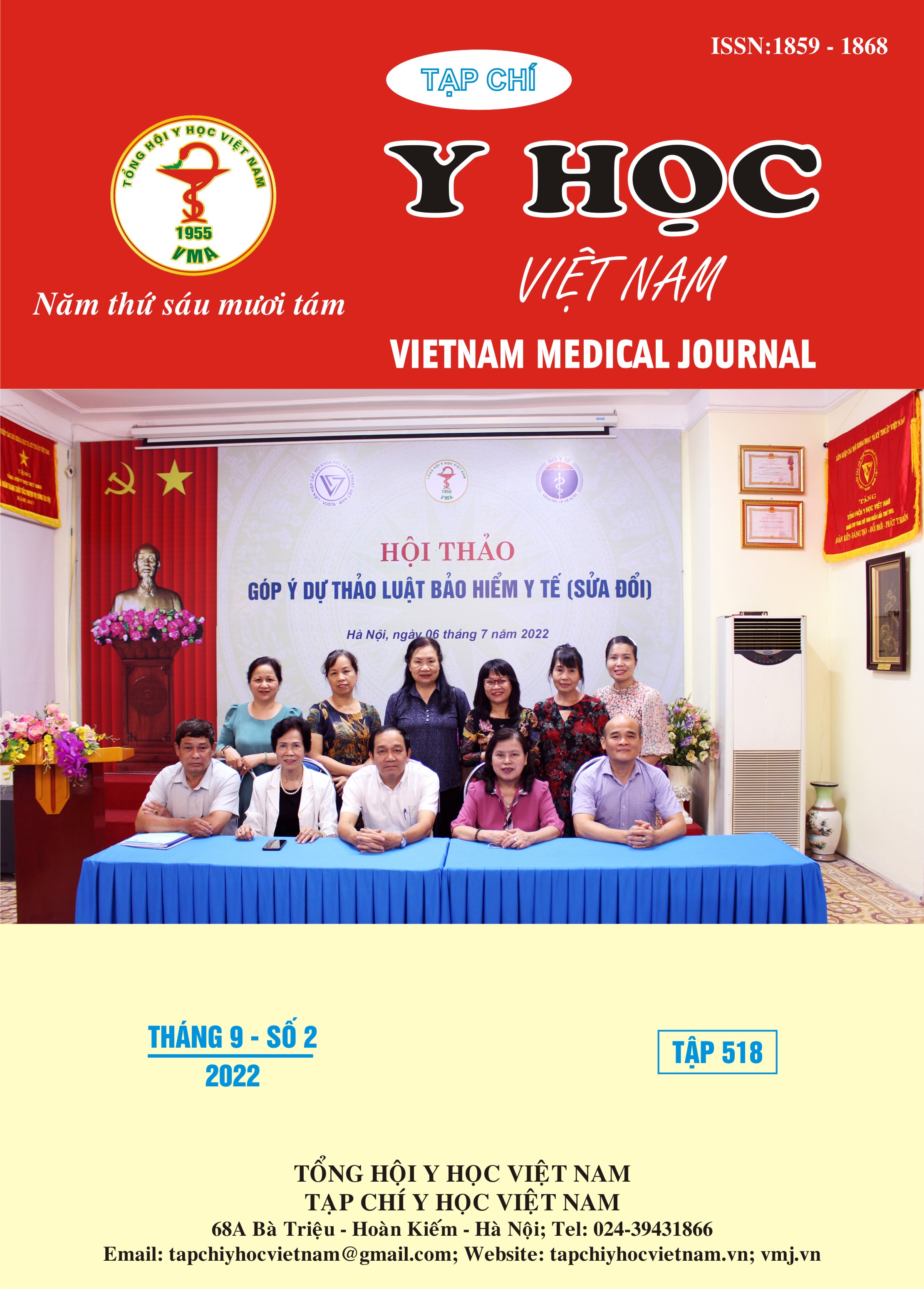PREVALENCE AND SEVERITY OF DENTAL EROSION IN THE PATIENTS WITH GASTROESOPHAGEAL REFLUX
Main Article Content
Abstract
Objectives: To determine the prevalence and severity of dental erosion in patients with gastroesophageal reflux disease (GERD) at Nguyen Trai hospital, Ho Chi Minh city. Methods: A cross-sectional study were performed in 169 patients, aged from 18 to 70 years old, at Nguyen Trai hospital, Ho Chi Minh city from November 2021 to June 2022. Dental erosion (DE) was accessed in patients diagnosed with GERD (GerdQ ≥6). Three dentists evaluated dental erosion in a full-mouth recording using the Basic Erosive Wear Examination (BEWE). The severity of dental erosion was based on the BEWE sum score (<2: none, 3-8: mild, 9-13: average, >14: severe). Chi-square, Fisher’s exact test and logistic regression model were used in this study. The statistical significance was adopted as: p<0.05, CI95%. Results: Participants had age average 56.0 ± 10.6, 67.5% from female. Of the 169 individuals examined 78.1% presented dental erosion. Regarding severity, mild erosion accounted for 50%, moderate was 42% and severe was 8%. DE was more frequent in posterior teeth. The first molars presented more dental erosion (14-17%) and were significant severest than other teeth (p<0,05). Retired people had a DE 4.4 times higher than office workers with OR=4.4, CI95% (1.1-19.0). People with symptoms of dyspnea had a DE rate 3 times higher than those without this symptom, OR=3.0 CI 95% (1.2-7.8). Conclusion: DE was a common extraesophageal manifestation of GERD patients in the study, presented in posterior teeth both of jaws. Patients with GERD need to be examined, consulted for DE prevention and timely intervention.
Article Details
Keywords
Dental erosion, gastroesophageal reflux disease
References
2. Roesch-Ramos L, Roesch-Dietlen F, Remes-Troche JM, et al. Dental erosion, an extraesophageal manifestation of gastroesophageal reflux disease. The experience of a center for digestive physiology in Southeastern Mexico. National Library of Medicine. 2014; 106(2):pp. 92-97.
3. Nguyễn Thu Thủy. Nhận xét mòn răng ở bệnh nhân trào ngược dạ dày thực quản. Đại học Y Hà Nội; 2014.
4. Quách Trọng Đức, Hồ Xuân Linh. Giá trị của bộ câu hỏi GERDQ trong chẩn đoán các trường hợp bệnh trào ngược dạ dày thực quản có hội chứng thực quản. Y học Thành phố Hồ Chí Minh. 2012;16(1):tr. 15-22.
5. Bartlett D, Ganss C, Lussi A, et al. Basic Erosive Wear Examination (BEWE): a new scoring system for scientific and clinical needs. Clin Oral Invest. 2008;12(1):pp. 65 – 68.
6. Bệnh Viện Nguyễn Trãi. Báo cáo số liệu khám bệnh nội trú và ngoại trú bệnh được chẩn đoán là trào ngược dạ dày thực quản năm 2021.
7. Ortiz ADC, Fideles SOM, Pomini KT, et al. Update in association of gastroesophageal reflux disease and dental erosion: system review. Expert review of Gastroenterology & Hepatology. 2021:pp. 1-10.
8. Harding SM. Gastroesophageal reflux, asthma, and mechanisms of interaction. Am J Med. 2001;111(8A):pp. 8S-12S.


